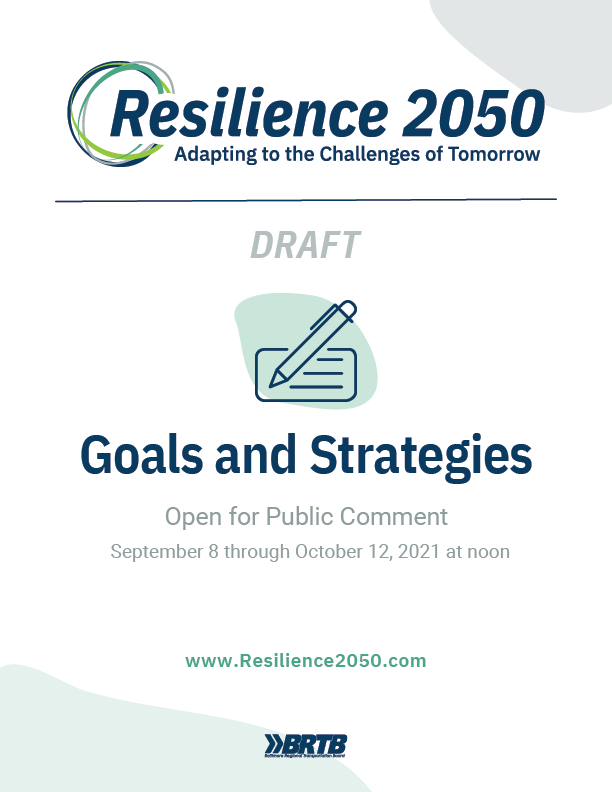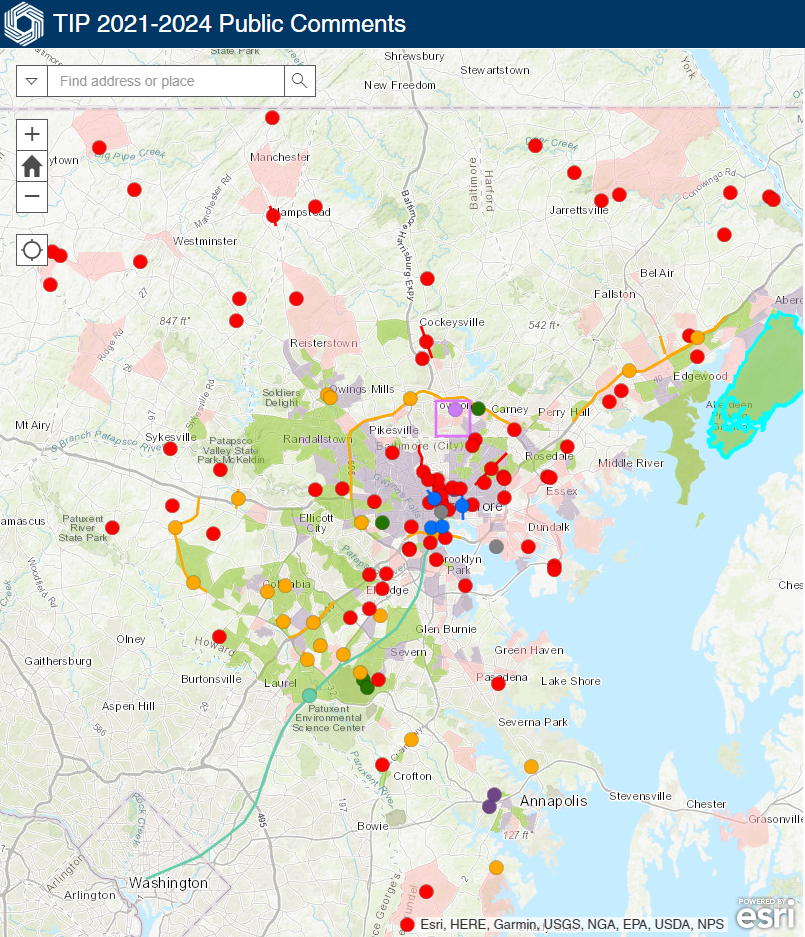
BRTB Launches Resilience 2050 White Papers to Inform the Public on the LRTP currently in Development.
The Baltimore Regional Transportation Board (BRTB) has launched a series of white papers to engage the public throughout the planning process for Resilience 2050: Adapting to the Challenges of Tomorrow, the next long-range transportation plan (LRTP) for the Baltimore region.
These targeted white papers will engage the public earlier and more effectively by providing information about the planning process and concisely explaining some of the complex information presented in the LRTP.
The white papers are an exciting tool that aim to improve the review process as they introduce and update the public on the LRTP over time and by topic, providing exposure prior to release of the draft of Resilience 2050 in spring 2023. It also encourages the public to provide feedback earlier in the process. This allows the BRTB to hear thoughts and ideas about Resilience 2050 while it is still in development, which is a more impactful time for consideration and inclusion of relevant feedback.
White papers will be released monthly over the course of the next year in preparation for the full draft plan, slated for completion in the spring of 2023.
The first white paper, Project Scoring, is now available, detailing the methodology for scoring candidate projects for Resilience 2050.
Readers can anticipate more Resilience 2050 white papers on topics such as:
- Traffic safety issues in the Baltimore region;
- The regional freight network;
- Transit;
- Air quality and the Conformity Analysis;
- Active transportation
- Forecasting population, households, and employment for Resilience 2050
- Emerging technologies
To read and provide input on the project scoring white paper and any future Resilience 2050 white papers, visit https://publicinput.com/resilience2050whitepapers
To learn more about the long-range transportation plan, visit resilience2050.com.

The Baltimore Regional Transportation Board (BRTB) along with the Intelligent Transportation Society of Maryland (ITSMD) held its joint Annual Meeting and BRTB Traffic Signal Forum on Thursday, November 4. Due to the ongoing pandemic, the event was held virtually this year.
The event brings together traffic and transportation professionals from the public and private sectors from across the state and region. The morning keynote address was delivered by Dr. Tim Kerns, Director, Maryland Department of Transportation (MDOT) Highway Safety Office, to focus attention on the troubling trend of increasing highway crashes, fatalities and serious injuries and challenged the attendees to work with state and local partners to help reverse the trend. Mr. Todd Lang, Director, Transportation Planning, Baltimore Metropolitan Council (BMC) delivered the closing keynote, on topics ranging from safety and signal operations to long range planning and the infrastructure bill being debated in congress.
Breakout sessions focused on signal operations and safety, connected and autonomous vehicles, and Transportation Systems Management & Operations (TSMO). A panel discussion on what a post-COVID transportation landscape might look like featured experts from freight, law enforcement, traffic data analysis, and private industry.
The virtual forum had 220 registered attendees. Guests included staff from local and state departments of transportation and public works, traffic engineers, signal engineers, planners, transportation system operators; private sector companies involved in consulting, providing/installing/maintaining/designing traffic signal equipment and ITS equipment, Metropolitan Planning Organizations (MPOs), Federal Highway Administration (FHWA) and academia. The event also included several exhibitors from public and private sectors.
For more information and to see the program, presenter bios, list of attendees, sponsors and exhibitors, please visit https://itsmd21.kujenga.tech/.
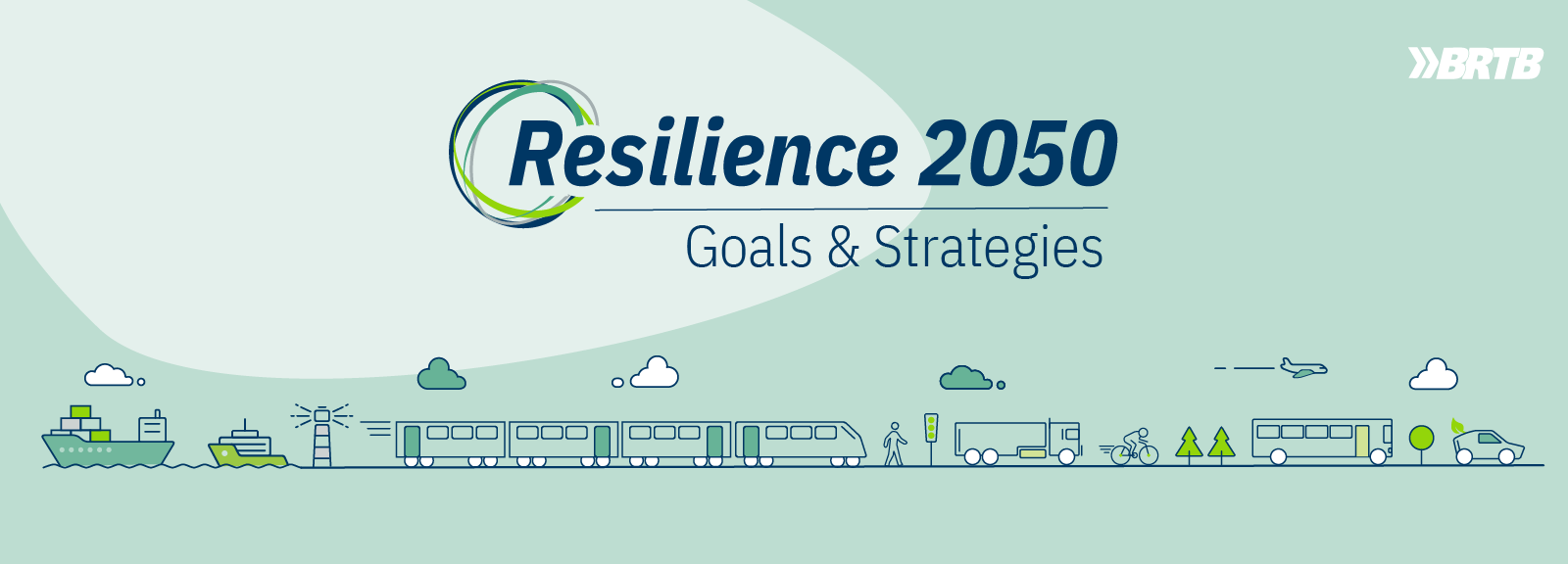
The Baltimore Regional Transportation Board (BRTB), as the metropolitan planning organization (MPO) for the Baltimore region, seeks public comments through Tuesday, October 12 on the draft goals and strategies for Resilience 2050: Adapting to the Challenges of Tomorrow.
Details about the draft goals and strategies for Resilience 2050, and how to provide comments, are available below.
About the Resilience 2050 Goals and Strategies
As part of the development of the next long-range transportation plan, Resilience 2050, to be adopted in 2023, the BRTB is considering a revised set of regional goals and strategies.
The proposed goals represent broad aspirations for the regional transportation system, including:
| Goals that address the basic functions of transportation | Goals that address the conditions or effects of transportation | Goals that address the transportation decision-making process |
|---|---|---|
|
|
|
The BRTB is also considering multiple strategies for each goal. Strategies are approaches or policies to help the region to implement a goal. For example, “eliminate hazardous or substandard conditions in high-crash locations and corridors” is a specific strategy that can help the region to “improve system safety,” the regional goal.
View the draft goals and strategies | Watch an overview of the Goals and Strategies
Share Your Thoughts
Public comments are welcome from Wednesday, September 8 through Tuesday, October 12, 2021 at noon. The BRTB will vote on the Resilience 2050 goals and strategies on Tuesday, November 30, 2021.
To share your thoughts and ideas, send all comments in writing to:
| SURVEY | TEXT | VOICEMAIL | FAX | ||
| publicinput.com/resilience2050goals | Text “resilience2050goals” to 855-925-2801 to take our survey |
855-925-2801 x 8248 | resilience2050goals@PublicInput.com |
Use: |
410-732-8248 |
Comments are also welcome during the public comment opportunity at the BRTB meetings at 9 a.m. on Tuesday, September 28 or Tuesday, November 30 (scheduled vote).
View
Comments Received | BRTB Response to Comments
For more information:
Zach Kaufman, zkaufman@baltometro.org
Notice
The Baltimore Regional Transportation Board operates its programs and services without regard to race, color, or national origin in accordance with Title VI of the Civil Rights Act of 1964, and other applicable laws. Appropriate services can be provided to qualified individuals with disabilities or those in need of language assistance who submit a request at least seven days prior to a meeting. Call 410-732-0500.

The Baltimore Regional Transportation Board (BRTB), as the metropolitan planning organization (MPO) for the Baltimore region, seeks public comments through Friday, July 9 on two transportation-related documents – the draft 2022-2025 Transportation Improvement Program (TIP) and the associated Air Quality Conformity Determination.
Returning this year is an interactive project map, in which the public can view projects and offer comments. Staff have also created an interactive story map to offer the public an easy way to learn more about these plans. Details about the TIP and Conformity Determination, and how to provide comments, are available below.
Draft 2022-2025 TIP | Draft Air Quality Conformity Determination | How to Comment
Draft 2022 – 2025 Transportation Improvement Program (TIP)
The draft 2022-2025 TIP is the list of regional transportation projects requesting federal funding in the near term. It includes $4.04 billion in proposed funding (federal, state, local, toll revenue) for highway, transit, bicycle and pedestrian projects during the next four years. The funding goes toward maintaining, operating and expanding the transportation system. These projects support regional goals such as accessibility, safety, and prosperity. Funding identified in the TIP is based on funding reasonably expected to be available from all sources.
The draft 2022-2025 TIP includes 129 projects, 6 of which are new. Highlights include:
- Anne Arundel County is dedicating $14 million in funding for a multi-modal transportation center in Parole at the Westfield Annapolis Mall to serve existing local and regional bus service, with possible future connectivity to modes such as bikeshare, carshare, and ride hailing services;
- Baltimore City, in partnership with the state of Maryland, is investing $12.6 million in an East-West Priority Bus Corridor, which will provide a comprehensive suite of investments facilitating more efficient transit trips, improving multimodal connections, and addressing existing safety issues.
- Baltimore City is also moving forward on vital roadway rehabilitation investments, including bicycle and pedestrian improvements, on portions of Belair Road, 25th Street, Fremont Avenue, Madison Street, Park Heights Avenue, Patapsco Avenue, and Pennington Avenue.
- Carroll and Harford Counties are dedicating federal and local funding for 20 essential bridge improvement projects.
- Howard County continues progress on a $27 million project at the US 29 and Broken Land Parkway Interchange which will provide new direct connections from the westbound US 29/Broken Land Parkway interchange ramp to a new road (Merriweather Drive) and to Little Patuxent Parkway. The project will also provide a direct connection from Merriweather Drive to Broken Land Parkway.
- MDOT SHA is dedicating $281 million in the draft 2022-2025 TIP on expanding the Baltimore Beltway (I-695) from I-70 to MD 43 by converting the inside shoulder into a new travel lane from I-70 to MD 43 and on reconstructing the interchange of I-695 and I-70.
- The Maryland Port Administration is partnering with CSX to leverage federal grant funding to reconstruct the 125-year-old Howard Street Tunnel in order to create double-stack rail access to and from the Port of Baltimore.
- The Maryland Transportation Authority (MDTA) is investing $102 million in toll revenues through 2027 on a project at the I-895/Baltimore Harbor Tunnel Toll Plaza replacing the existing toll booths with an overhead gantry which will eliminate traffic queues, improve vehicular and employee safety, and reduce vehicle emissions and fuel consumption.
- MDTA also continues engineering and construction on a $1.1 billion project in Baltimore and Harford Counties adding two additional Express Toll Lanes on I-95 from north of MD 43 to north of MD 24. This project is funded with toll revenues.
Please view the draft 2022-2025 TIP through the BRTB’s interactive project map or learn more in our story map. The draft 2022-2025 TIP is also available in PDF format for download:
Draft 2022-2025 TIP
Introduction and Background | Financial Plan
Projects by jurisdiction: Low-income and Minority Concentration | Appendices
Projects in the draft TIP are also available to review in pdf format by project sponsor, either a local jurisdiction or state agency:
Anne Arundel County | Baltimore City | Baltimore County
Carroll County | Harford County | Howard County
Maryland Port Administration | Maryland Transportation Authority
MDOT MTA | MDOT SHA and the Office of the Secretary
Analysis of Air Quality Conformity
The Baltimore region does not meet the National Ambient Air Quality Standards and so must review its current transportation plans and programs to ensure conformity with the State Air Quality Implementation Plan (SIP).
The Air Quality Conformity Determination report details a comprehensive analysis of Baltimore region mobile source emissions as a result of implementing the draft 2022-2025 TIP. Highlights of the report include:
- Staff from BMC and the Maryland Department of the Environment (MDE) used the Motor Vehicle Emission Simulator (MOVES) 2014a model, developed by the U.S. Environmental Protection Agency (EPA) to analyze the amount of mobile source emissions generated from vehicle travel associated with the implementation of the projects in the draft TIP.
- The report addresses mobile source emissions of VOC and NOx, which are precursors of ground-level ozone emissions.
- Adopted forecasts for population, housing, and employment in the Baltimore region were used for this conformity analysis.
- Current data about the types and purpose of vehicles, fuel data, and meteorological data were used as input into the analysis.
- This Conformity Determination shows that transit ridership is projected to increase from 2022 to 2045.
- Projected mobile source emissions for draft 2022-2025 TIP are well below the motor vehicle emission budgets set in the state implementation plan, or SIP.
- Implementation of the projects proposed in the draft 2022-2025 TIP will not worsen the region’s air quality or delay the timely attainment of national air quality standards.
The conformity determination is available in PDF format for download. Download the Draft Conformity Determination of the draft 2022-2025 TIP:
Conformity Determination | Appendices
Share Your Thoughts
Public comments are welcome from Tuesday, June 8 through Friday, July 9, 2021. The BRTB will vote on these documents on Tuesday, July 27, 2021.
Public Comments Received | BRTB Response to Comments
Join Us for a Virtual Public Meeting
Those interested in learning more about the draft 2022-2025 TIP and Air Quality Conformity may do so during a virtual public meeting on:
To share your thoughts and ideas, send all comments in writing to:
| ONLINE | VOICEMAIL | FAX | ||
| https://publicinput.com/H2050 | H2050@PublicInput.com | @BaltoMetroCo @BmoreInvolved #BRTBlistens |
855-925-2801 x 8248 | 410-732-8248 |
Comments are also welcome during the public comment opportunity at the BRTB meetings at 9 a.m. on Tuesday, June 22, or Tuesday, July 27 (scheduled vote).
Note: MDOT MTA, in lieu of a separate mandated public comment period, has exercised its option to use the procedures of the BRTB’s public involvement process for the 2022-2025 TIP. The public participation process for the TIP meets the Federal Transit Administration (FTA) public participation requirements for MDOT MTA’s Program of Projects (POP).
For more information:
Contact Regina Aris, assistant transportation director, by email at raris@baltometro.org, or by phone at 410-732-9572.
Notice
The Baltimore Regional Transportation Board operates its programs and services without regard to race, color, or national origin in accordance with Title VI of the Civil Rights Act of 1964, and other applicable laws. Appropriate services can be provided to qualified individuals with disabilities or those in need of language assistance who submit a request at least seven days prior to a meeting. Call 410-732-0500.
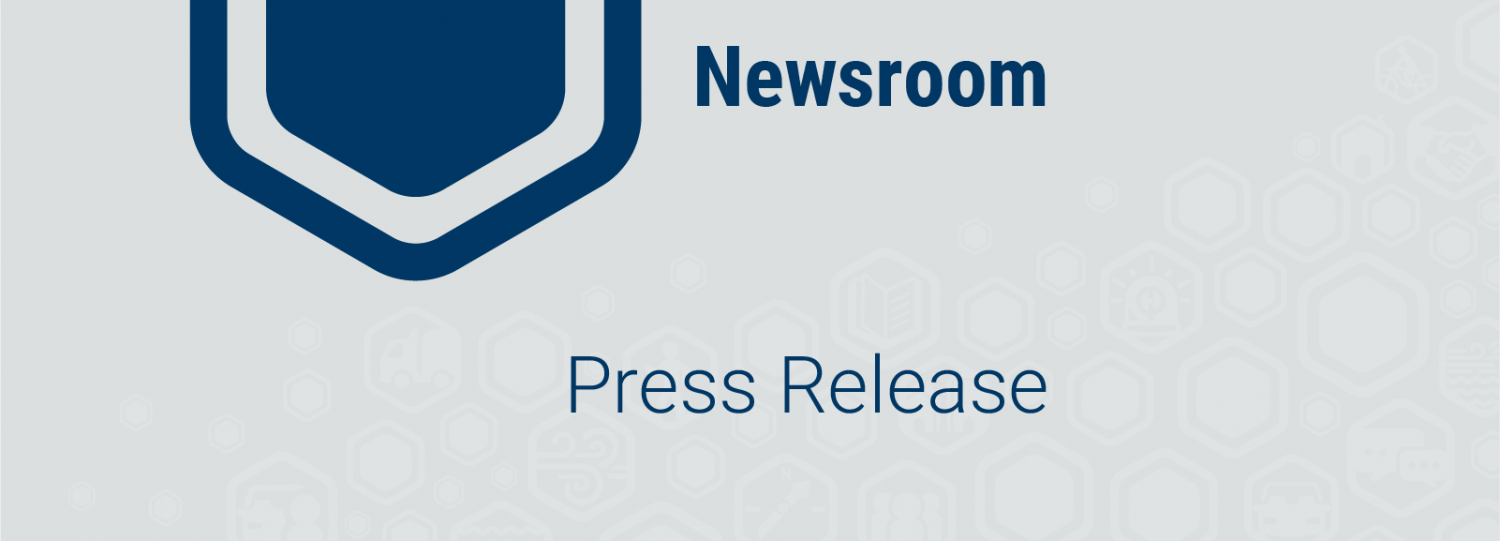
The Baltimore Regional Transportation Board (BRTB) welcomes comments on its draft Budget & Work Program for Fiscal Years 2022-2023 through Thursday, March 11, 2021.
The BRTB is scheduled to vote on the final Budget & Work Program on Friday, April 16.
What is the UPWP?
The BRTB’s Budget & Work Program is known as the Unified Planning Work Program (UPWP) for Transportation Planning. It is a federal requirement that details projects, studies and other activities to be completed by BRTB members and staff of the Baltimore Metropolitan Council (BMC.)
The BRTB develops this list of regional transportation planning activities every two fiscal years. This UPWP includes a budget for FY 2022 of $9,000,000 and an estimated FY 2023 budget of $6,290,000.
UPWP funds support staff for regional planning activities with some consultant assistance. New projects for FY 2022 include:
- Patapsco Regional Greenway – Funds consultant services to advance the design and planning for a segment of the Patapsco Regional Greenway, the proposed 30-mile trail from Sykesville in Carroll County to Baltimore’s Inner Harbor. Segment: Guinness Open Gate Brewery to the Southwest Area Park.
- Corridor Analysis to support Implementation of the Central Maryland Regional Transit Plan – to begin the corridor feasibility study phase by defining and evaluating preliminary alternatives for a number of the corridors identified in the RTP. Analysis may include routes, service patterns, alignments, levels of service, potential modes and system requirements. Evaluation could include elements from the FTA Capital Investment Grant program and/or a P3 screening mechanism.
View the draft FY 2022-2023 UPWP or a list of Frequently Asked Questions
B’More Involved
The public is invited to provide feedback on these proposed regional transportation planning activities through Thursday, March 11, 2021.
To learn more about the UPWP and the proposed updated budget and projects, please view a recorded presentation.
Please send all comments in writing to:
| ONLINE | FAX | |||
| BRTB Comment Form | comments@baltometro.org | @BaltoMetroCo @BmoreInvolved #BRTBlistens |
The Baltimore Regional Transportation Board 1500 Whetstone Way, Suite 300 Baltimore, MD 21230 |
410-732-8248 |
The public may also provide feedback during the Public Comment Opportunity at the BRTB monthly meetings on Tuesday, February 23, Tuesday, March 23, or before the BRTB votes on Friday, April 16. Due to the public health concerns presented by the Coronavirus (COVID-19), all scheduled meetings will take place virtually. Please check the calendar for an updated schedule and links to attend the virtual meetings.
View:
The BRTB is the federally recognized metropolitan planning organization (MPO) for transportation in the region. BMC provides the BRTB with staff support.
The Baltimore Regional Transportation Board operates its programs and services without regard to race, color, or national origin in accordance with Title VI of the Civil Rights Act of 1964, and other applicable laws. Appropriate services can be provided to qualified individuals with disabilities or those in need of language assistance who submit a request at least seven days prior to a meeting. Call 410- 732-0500. Dial 7-1-1 or 800-735-2258 to initiate a TTY call through Maryland Relay. Si se necesita información de Título VI en español, llame al 410-732-0500.

The Baltimore Regional Transportation Board (BRTB), as the metropolitan planning organization (MPO) for the Baltimore region, seeks public comments through Friday, July 17 on two transportation-related documents – the draft 2021-2024 Transportation Improvement Program (TIP) and the associated Air Quality Conformity Determination.
New this year, is an interactive project map, in which the public can view projects and offer comments, and a Storymap which provides an overview of these documents.
Draft 2021-2024 TIP | Air Quality Conformity Determination | How to Comment
Draft 2021 – 2024 Transportation Improvement Program (TIP)
The draft 2021-2024 TIP is the list of regional transportation projects requesting federal funding in the near term. It includes $4.26 billion in proposed federal, state and local money for highway, transit, bicycle and pedestrian projects during the next four years. The funding goes toward maintaining, operating and expanding the transportation system. These projects support regional goals such as accessibility, safety, and prosperity. Funding identified in the TIP is based on funding reasonably expected to be available from local, state, and federal sources.
The draft 2021-2024 TIP includes 140 projects, 24 of which are new. Highlights include:
- Anne Arundel County is dedicating $14 million in funding for a multi-modal transportation center in Parole to serve existing local and regional bus service, with possible future connectivity to modes such as bikeshare, carshare, and ridehailing services;
- In Baltimore City, several new projects focus on increasing bicycle and pedestrian access, including:
- constructing an on-street cycle track on Bush Street in South Baltimore;
- installing an on-street cycle track and/or buffered bike lanes on Eutaw Place near Druid Hill Park;
- building a 2 mile protected cycle track along either Wolfe or Washington Street in East Baltimore; and
- constructing a pedestrian and cyclist trail between the Inner Harbor cycle track and the Middle Branch Trail as part of the Baltimore Greenway Loop that connects Baltimore City's major parks.
- Baltimore County is using $2 million in federal and local funds to purchase vehicles and signage for the Towson Circulator – a new fixed route service in Towson.
- Carroll County is dedicating federal and local funding to 9 essential bridge improvements. In addition, MDOT SHA plans to complete a project in 2021 focused on improving MD 30 Business in Hampstead by reconstructing the existing roadway with ADA-compliant sidewalks and crosswalks, stormwater management, landscaping, and traffic signals.
- Howard County is moving forward with a $26 million project that widens Marriottsville Road from two to four lanes between US 40 and MD 99, including replacing the existing two lane bridge over I-70.
- MDOT SHA is dedicating $281 million in the draft 2021-2024 TIP for the expansion of the Baltimore Beltway (I-695), including conversion of the inside shoulder into a new travel lane from I-70 to MD 43, reconfiguring the interchange of I-695 and I-70, and adding a lane on the outer loop of I-695, from US 40 to MD 144.
- The Maryland Port Administration is partnering with CSX to leverage federal funding to reconstruct the 125-year-old Howard Street Tunnel in order to create double-stack rail access to and from the Port of Baltimore.
- The Maryland Transportation Authority (MDTA) and Baltimore City are collaborating on changes to seven miles of I-95 and sections of Hanover Street, McComas Street and Key Highway. The project seeks to address traffic needs and support ongoing and planned redevelopment of the Port Covington peninsula in South Baltimore.
- MDTA continues its expansion of the I-95 Express Toll Lanes (ETL) by dedicating over $774 million in toll revenues towards implementation of the first phase of the I-95 Section 200 Northbound Extension in Baltimore and Harford Counties.
Please view the draft 2021-2024 TIP through the BRTB’s interactive project map. The draft 2021–2024 TIP is also available in PDF format for download:
Draft 2021-2024 TIP
Introduction and Background | Financial Plan
Projects by jurisdiction: Low-income and Minority Concentration | Appendices
Projects in the draft TIP are also available to review in pdf format by project sponsor, either a local jurisdiction or state agency:
Anne Arundel County | Baltimore City | Baltimore County
Carroll County | Harford County | Howard County
Maryland Port Administration | Maryland Transportation Authority
MDOT MTA | MDOT SHA and the Office of the Secretary
Analysis of Air Quality Conformity
The Baltimore region does not meet the National Ambient Air Quality Standards and so must review its current transportation plans and programs to ensure conformity with the State Air Quality Implementation Plan (SIP).
The Air Quality Conformity Determination report details a comprehensive analysis of Baltimore region mobile source emissions as a result of implementing the draft 2021-2024 TIP. Highlights of the report include:
- Staff from BMC and the Maryland Department of the Environment (MDE) used the Motor Vehicle Emission Simulator (MOVES) 2014a model, developed by the U.S. Environmental Protection Agency (EPA) to analyze the amount of mobile source emissions generated from vehicle travel associated with the implementation of the projects in the draft TIP.
- The report addresses mobile source emissions of VOC and NOx, which are precursors of ground-level ozone emissions.
- New Round 9A forecasts for population, housing, and employment in the Baltimore region were used for this conformity analysis.
- Data about the types and purpose of vehicles, fuel data, and meteorological data from 2017 were used as input into the analysis.
- This Conformity Determination shows that transit ridership is projected to increase in the horizon years.
- Projected mobile source emissions for draft 2021-2024 TIP are well below the motor vehicle emission budgets set in the state implementation plan, or SIP.
- Implementation of the projects proposed in the draft 2021-2024 TIP will not worsen the region’s air quality or delay the timely attainment of national air quality standards.
Why is an air quality analysis needed?
- The Baltimore region is a "marginal" nonattainment area for the ground-level ozone standard set in 2015. This means that levels of ozone pollution in the air are slightly higher than the federally allowable amount of 70 parts per billion (ppb).
- The level of ozone that the region experienced in 2019 as a "design value", or the value that the US EPA uses to determine whether a region is reaching the standard, was 75 ppb. As a result, the region is not attaining the standard and the BRTB must conduct a conformity determination.
- The air quality analysis evaluates whether the transportation projects in a region's TIP and Plan would hinder the progress of that region attaining the air quality standard.
The conformity determination is available in PDF format for download:
Conformity Determination | Appendices
Share Your Thoughts
Public comments are welcome from Tuesday, June 16 through Friday, July 17, 2020. The BRTB will vote on these documents on Tuesday, August 25.
MDOT MTA, in lieu of a separate mandated public comment period, has exercised its option to use the procedures of the BRTB’s public involvement process for the 2021-2024 TIP. The public participation process for the TIP meets the Federal Transit Administration (FTA) public participation requirements for MDOT MTA’s Program of Projects (POP).
View Public Comments Received | View BRTB Response to Comments
Join Us for a Virtual Public Meeting
Those interested in learning more about the draft 2021-2024 TIP and Air Quality Conformity may view our Storymap or join us for a:
- Thursday, July 9 at 6 p.m.
- Tuesday, July 14 at 12:30 p.m.
Join these meetings by using: Computer, Tablet or Smartphone or dial in by phone 877-309-2073 or 571-317-3129 and enter Access Code: 563-035-189.
View a recording of the public meeting
To share your thoughts and ideas, send all comments in writing to:
| ONLINE | FAX | |||
| BRTB Comment Form | comments@baltometro.org | @BaltoMetroCo @BmoreInvolved #BRTBlistens |
The Baltimore Regional Transportation Board 1500 Whetstone Way, Suite 300 Baltimore, MD 21230 |
410-732-8248 |
Comments are also welcome during the public comment opportunity at the BRTB meetings at 9 a.m. on Tuesday, June 23, Tuesday, July 28, or Tuesday, August 25 (scheduled vote).
For more information:
Contact Regina Aris, assistant transportation director, by email at raris@baltometro.org, or by phone at 410-732-9572.
Notice
The Baltimore Regional Transportation Board operates its programs and services without regard to race, color, or national origin in accordance with Title VI of the Civil Rights Act of 1964, and other applicable laws. Appropriate services can be provided to qualified individuals with disabilities or those in need of language assistance who submit a request at least seven days prior to a meeting. Call 410-732-0500.

The Baltimore Regional Transportation Board (BRTB) welcomes comments on its draft Budget & Work Program for Fiscal Years 2020-2021 through Thursday, March 12, 2020.
The BRTB is scheduled to vote on the final Budget & Work Program on Friday, May 1, 2020.
What is the UPWP?
The BRTB’s Budget & Work Program is known as the Unified Planning Work Program (UPWP) for Transportation Planning. It is a federal requirement that details projects, studies and other activities to be completed by BRTB members and staff of the Baltimore Metropolitan Council (BMC).
The BRTB develops this list of regional transportation planning activities every two fiscal years. This addendum includes an updated budget for FY 2021 of $8,901,750.
UPWP funds support staff for regional planning activities with some consultant assistance. New projects for FY 2021 include:
- Transportation and Land Use Connection Grants - Provide short-term consultant services to local jurisdictions for small planning projects that either improve access to existing communities and regional generators of economic activity or promote mixed-use, walkable communities and that support a variety of transportation alternatives. This is directly related to several strategies the BRTB adopted in developing the regional long-range transportation plan, Maximize2045.
- Patapsco Regional Greenway – Funds consultant services to advance the design and planning for a second segment of the Patapsco Regional Greenway, a proposed 30-mile trail from Sykesville in Carroll County to Baltimore’s Inner Harbor.
- Baltimore Region Transit Governance and Funding – Study, analyze and recommend alternative governance and funding models for the Baltimore area transit system to the current state-led model. Identify potential approaches that more equitably distribute governing and funding responsibilities, improve performance, accountability and increased ridership on Baltimore’s transit system. This proposed project is an outgrowth of the Regional Transit Plan for Central Maryland.
- Transit Priority Screening – Evaluate up to three corridors where local transit operates to see if travel time is improved by providing priority to transit vehicles at certain intersections controlled by traffic signals.
- Infrastructure in a Changing Climate – To address impacts that are already evident, this task will develop the Resource Toolkit for Planning, Operating, and Maintaining Local Infrastructure in a Changing Climate. The Toolkit will provide ways that operations and maintenance departments could consider climate change in their decisions today and in coming years to ensure operations remain as efficient as possible, while considering impacts on resources, staff, and on our community.
View the Addendum to the FY 2020-2021 UPWP or a list of Frequently Asked Questions
Download the Budget & Work Program for FY 2020-2021 or visit BMC to view a printed copy.
B’More Involved
The public is invited to provide feedback on these proposed regional transportation planning activities through Thursday, March 12, 2020.
To learn more about the UPWP and the proposed updated budget and projects, please view the recording below of the virtual public meeting held on Wednesday, February 19 at noon.
Virtual Public Meeting
Please send all comments in writing to:
| ONLINE | FAX | |||
| BRTB Comment Form | comments@baltometro.org | @BaltoMetroCo @BmoreInvolved #BRTBlistens |
The Baltimore Regional Transportation Board 1500 Whetstone Way, Suite 300 Baltimore, MD 21230 |
410-732-8248 |
The public may also provide feedback during the Public Comment Opportunity at the BRTB monthly meetings at 9 a.m. on Tuesday, February 25, Tuesday, March 24, or before the vote at 9:45 a.m. on Friday, May 1. at the Baltimore Metropolitan Council (BMC), located at 1500 Whetstone Way, Suite 300, Baltimore, MD 21230.
View:
The BRTB is the federally recognized metropolitan planning organization (MPO) for transportation in the region. BMC provides the BRTB with staff support.
The BRTB operates its programs and services without regard to race, color, or national origin in accordance with Title VI of the Civil Rights Act of 1964, and other applicable laws. Appropriate services can be provided to qualified individuals with disabilities or those in need of language assistance who submit a request at least seven days prior to a meeting. Call 410-732-0500.
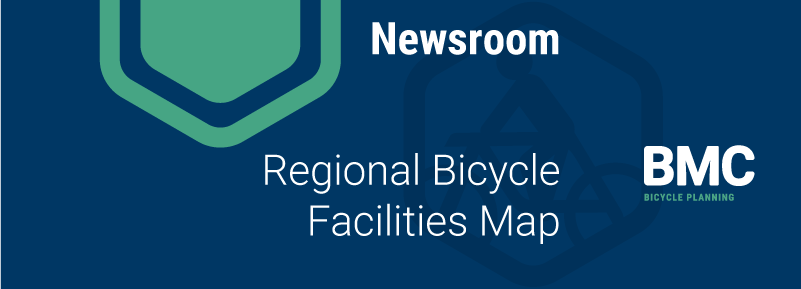
We are proud to announce that the Regional Bicycle Facilities Map is up to date. Originally launched in February 2019, this data product enhances bicycle commuting planning in the Baltimore region. This latest release updates the map for 2019 and adds data for Queen Anne’s County.
The Regional Bicycle Facilities Map contains all existing bicycle trails and lanes in the Baltimore region. The focus of the data is on commuting, rather than recreational cycling. It will enable better transportation planning by allowing planners to identify gaps in connectivity among existing bicycle trails and lanes.
Information includes location, facility type, side of road, trail or road name (if applicable), and speed limit (if applicable). Bicycle trails that do not aid in commuting, such as a small loop in a park, may not be represented on the Regional Bicycle Facility Map.
The new data can be accessed through an online mapping application. For planners and advanced data users, the raw GIS data is available on BMC’s website.
The Regional Bicycle Facilities Map is a collaborative product of BMC, the Baltimore Regional Transportation Board’s (BRTB’s) Bicycle and Pedestrian Advisory Group (BPAG), county planning and GIS partners from the Baltimore region, the Maryland Department of Planning, Maryland Department of Transportation, and the Maryland Department of Natural Resources.
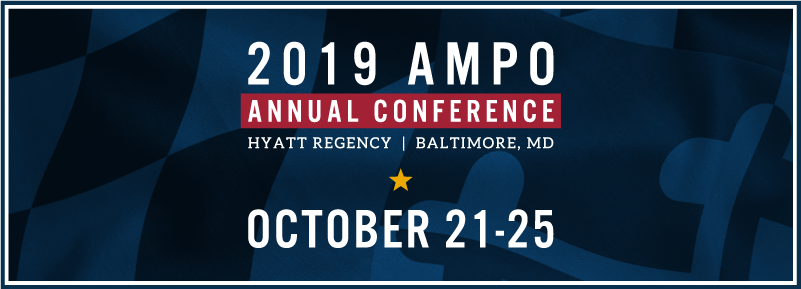
The week of October 21-25, the Baltimore Metropolitan Council (BMC) along with the Baltimore Regional Transportation Board (BRTB), hosted the 2019 AMPO Annual Conference at the Hyatt Regency Inner Harbor. The Association of Metropolitan Planning Organizations (AMPO) is a nonprofit, membership organization established in 1994 to serve the needs and interests of “metropolitan planning organizations (MPOs)” nationwide.
Over 320 representatives of MPOs from across the country attended the Annual Conference, along with Policy Board Members, Federal and State employees, and consultants who shared information on MPO issues.
The conference included workshops and sessions to share best practices of regional efforts to advance sustainable, multi-modal transportation planning. These sessions and workshops included topics such as environmental justice, the future of transportation, transportation planning capacity building, MPO roles and relevancy, accessibility, public involvement, funding and financing, and data.
Highlights of the conference included addresses by the Federal Highway Administrator Nicole Nason, MDOT Deputy Secretary R. Earl Lewis and the Baltimore City DOT Director Steve Sharkey.
Also of note, BMC’s Director of Transportation Planning, Todd Lang, was re-elected to the nine member AMPO Board of Directors during the conference.
BMC and BRTB were pleased to host this year’s gathering that welcomed national and regional experts to greater Baltimore, and highlighted the great work of MPOs throughout the Country.
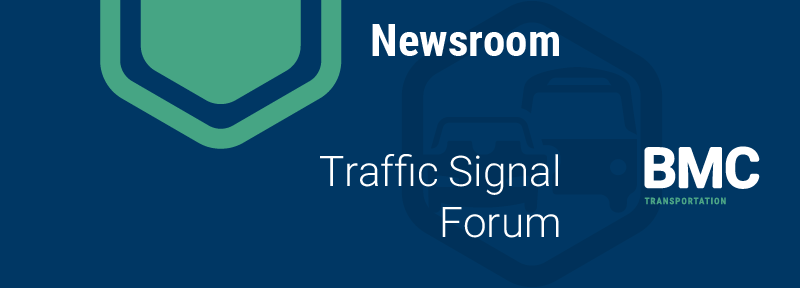
The Baltimore Regional Transportation Board (BRTB) along with the Intelligent Transportation Society of Maryland (ITSMD) held its joint Annual Meeting and BRTB Traffic Signal Forum on Wednesday, October 16th at the Maritime Conference Center in Linthicum. The two events are held jointly every two years.
The forum welcomed a record breaking 250 attendees and examined the conference theme of Smart Mobility: Moving Safely, Moving Ahead. Guests included staff from local and state departments of transportation and public works, traffic engineers, signal engineers, planners, transportation system operators; private sector companies involved in consulting, providing/installing/maintaining/designing traffic signal equipment and ITS equipment, Metropolitan Planning Organizations (MPOs), Federal Highway Administration (FHWA) and academia. The event also included 26 exhibitors from public and private sectors.
The forum commenced with a welcome video from Chrissy Nizer, Maryland Motor Vehicle Administrator and welcome keynote from Neil Pedersen, Executive Director of the Transportation Research Board. Pedersen provided an informative overview of completed research on strategies, challenges, and issues related to implementation of connected vehicle and automated vehicle technologies.
Following the opening address, the group split into two tracks of sessions. The first focused on transportation technologies, including emerging trends such as shared mobility and micro mobility (e-scooters) and transportation system management. The second focused on traffic signal operations, data, and technologies.
During lunch, keynote speaker Shailen Bhatt, President and CEO of the Intelligent Transportation Society of America (ITSA) provided information from a national perspective related to transportation technologies and priorities for reauthorization of federal transportation legislation, which expires in September of 2020.
The final plenary session was a panel on smart mobility featuring representatives from CISCO, Ford, BOSCH, and Lyft, who shared their perspectives and observations of implementing emerging technologies and new forms of mobility.
The day concluded with an exhibitor-sponsored reception, which provided more time for networking and discussions with exhibitors.
Guests received a wealth of new information, training, discussion and networking as a result of the Joint ITSMD Annual Meeting and BRTB Traffic Signal Forum.
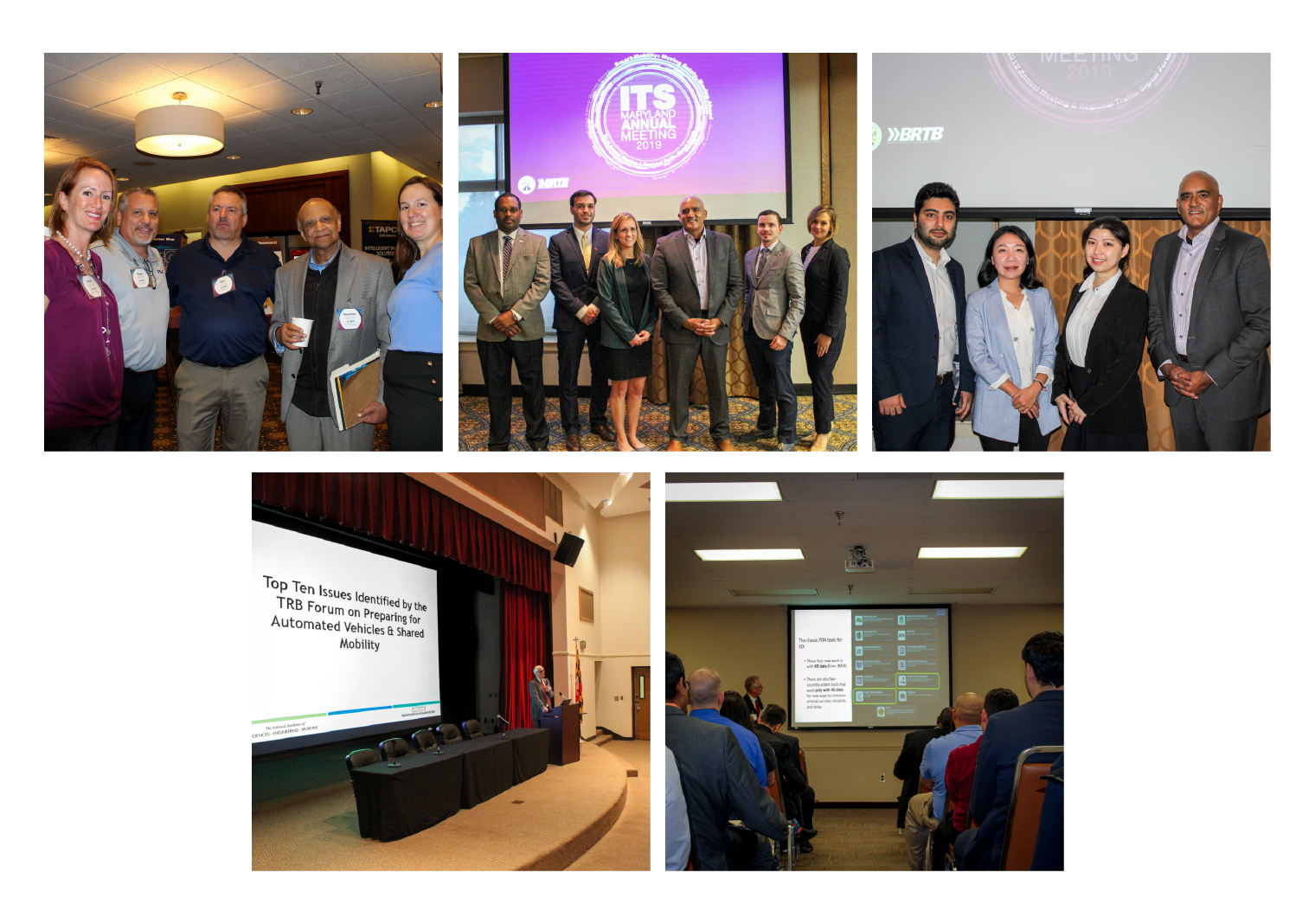 |

